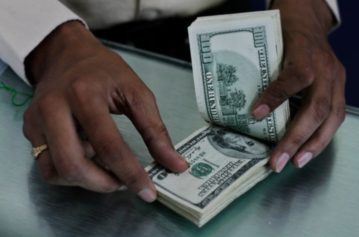
An updated estimate by the Commerce Department showed gross domestic product deteriorated at an annual rate of 2.9 percent in the first three months of 2014, a stark revision that forced economists to downgrade their forecasts of how much the world’s largest economy will grow this year.
The United States survived the setback, which most economists agree was the result of an abnormally severe winter that reached into Southern states ill-equipped to deal with onslaughts of ice and snow.
More recent evidence shows the economy is back on track: Hiring, retail sales, new-home construction and consumer confidence all rebounded smartly this spring.
A separate government report Wednesday showed inventories for nondefense durable goods jumped 1 percent in May after a 0.4 percent increase the previous month. The first-quarter reading still stings.
The Commerce Department initially reported the GDP growth simply stalled. A second estimate said GDP shrunk at an annual rate of 1 percent, the first contraction since the first quarter of 2011. The final reading shows the U.S. endured its biggest economic collapse since the Great Recession in 2009. America’s economy expanded at annual rates of 4.1 percent in the third quarter of 2013 and 2.6 percent in the fourth.
Wall Street analysts had predicted the first-quarter estimate would be revised lower, but only to a contraction of 1.8 percent. Equity markets rose, evidence that traders are more focused on signs of future growth. Some also could be betting that a deeper-than-realized hole at the start of the year will cause the Federal Reserve to leave its benchmark interest rate at zero for longer than it had previously planned.
The U.S. economy now is growing again. Economists at National Bank Financial, PNC Financial Services, and Deutsche Bank, among others, say GDP likely grew at an annual rate of 4 percent in the second quarter.
State and local governments in the U.S. are starting to spend again, removing a drag on the economy. Steady hiring should buoy household spending, and a stronger global growth should bolster exports.
source: theglobeandmail.com
